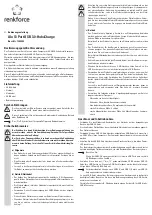
Step 2
Load the chassis onto a mechanical lift or floor jack as follows:
a) Position the mechanical lift next to the shipping pallet that holds the chassis.
b) Elevate the lift platform to the level of the bottom of the chassis (or no more than 1/4 inch [0.635 cm] below the
bottom of the chassis).
c) Use at least two persons to slide the chassis fully onto the lift so that the side of the chassis touches or is close to
the vertical rails on the lift. Make sure that the front and rear of the chassis are unobstructed so you can easily push
the chassis into the rack.
To prevent personal injury or damage to the chassis, never attempt to lift or tilt the chassis using the handles
on modules (such as power supplies, fans, or cards); these types of handles are not designed to support the
weight of the unit.
Warning
Statement 1032
To lift the chassis, use a mechanical lift. Do not use the handles on the side of the chassis (the handles are
not rated for lifting over 200 pounds [91 kg]). Use the side handles for only repositioning the chassis after it
is already on the mechanical lift or in the rack or cabinet.
Caution
Step 3
Use the mechanical lift to move and align the rear of the chassis to the front of the four-post rack or cabinet.
Make sure that the bottom of the chassis is elevated to the height of the bottom-support rails or no more than 1/4 inch
(0.6 cm) above the rails.
Step 4
Push the chassis halfway onto the rack or cabinet.
Use at least two persons to push the chassis onto the bottom-support rails and one person to guide the chassis down the
center of the rails. Push the lower half of the front side of the chassis so that the back side enters the rack first, and push
until the chassis is halfway onto the rack (see the following figure). Ensure that the chassis does not get caught on any
of the expansion edges of the bottom-support rail.
Cisco Nexus 7710 Switch Site Preparation and Hardware Installation Guide
OL-30452-01.
24
Installing the Chassis
Installing a Chassis on a Rack or Cabinet
















































